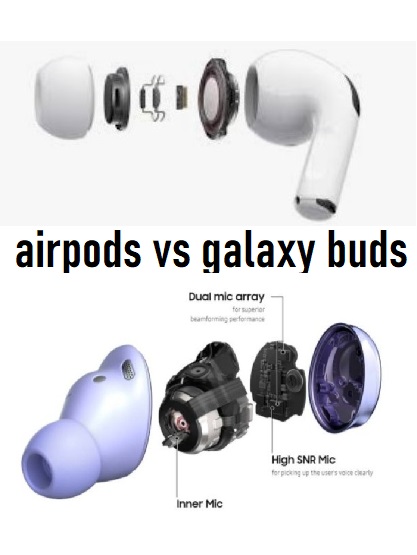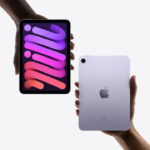
The Rise of True Wireless Stereo (TWS) Earphones
True Wireless Stereo (TWS) earphones have quickly become a staple in the world of personal audio. If you’ve recently upgraded your phone or just walked into an electronics store, you’ve likely noticed these sleek, cord-free gadgets everywhere. But what’s behind their meteoric rise in popularity?
The shift from wired earphones to TWS began with a major change in smartphone design. Remember when Apple removed the headphone jack from its iPhones? It was a bold move that set off a chain reaction. Other smartphone manufacturers soon followed suit, leading to a surge in demand for wireless alternatives. Enter TWS earphones: small, cordless devices that connect via Bluetooth and fit snugly in your ears.
TWS earphones offered a new level of convenience. No more tangled wires or accidental yanks. You could simply pop them in, pair them with your phone, and enjoy your favorite tunes or take calls hands-free. This innovation made them a hit, especially for those who were tired of the hassle of wired earphones.
However, the popularity of TWS earphones comes with its own set of challenges. While they provide impressive convenience, they also have some fundamental problems that might affect your experience. One major issue is their limited lifespan. Unlike wired earphones that could last for years with proper care, TWS earphones often need replacing every 1 to 2 years due to battery wear and other issues.
Additionally, TWS earphones can be tricky to repair. Most models are not designed with repairability in mind, which contributes to growing electronic waste. You might find yourself replacing your earphones rather than fixing them, adding to the environmental impact.
Audio quality is another area where TWS earphones often fall short. While they have come a long way, achieving high-fidelity sound can still be a challenge. Bluetooth technology has its limits, and although advancements are being made, it’s tough to match the quality of wired connections.
In summary, while TWS earphones offer fantastic convenience and a sleek design, they come with some significant drawbacks. As the market continues to evolve, it’s crucial for both consumers and manufacturers to address these issues to ensure a better listening experience for everyone.
Understanding the Challenges of True Wireless Stereo (TWS) Earphones
True Wireless Stereo (TWS) earphones have revolutionized how we listen to music, take calls, and interact with our devices. Their wireless convenience and compact design have made them a popular choice for many. However, despite their many advantages, TWS earphones come with a range of challenges. Let’s dive into some of these issues to help you make an informed decision about your next pair of earphones.
1. Short Lifespan of TWS Earphones
One of the biggest concerns with TWS earphones is their limited lifespan. Unlike traditional wired earphones that can last for years with proper care, TWS earphones often have a much shorter life. Typically, a good pair of TWS earphones will last between 1 to 2 years before you start noticing performance issues.
Battery Life and Component Degradation
The primary reason for this short lifespan is battery wear. TWS earphones rely on rechargeable batteries, which degrade over time. As these batteries age, they hold less charge, which means shorter listening times between charges. Additionally, the tiny components inside TWS earphones are more susceptible to wear and tear, impacting their overall performance.
If you’ve ever experienced that moment when one earbud suddenly stops working or the sound quality diminishes, you’re not alone. These issues are often linked to the inevitable degradation of the internal components and battery.
2. Repairability Issues
Another significant challenge with TWS earphones is their repairability. Most TWS earphones are designed to be sleek and compact, which unfortunately makes them difficult to repair. Unlike wired earphones, which can often be fixed by replacing a frayed wire or damaged plug, TWS earphones usually require specialized tools and expertise for repairs.
Impact on E-Waste
The difficulty in repairing TWS earphones leads to a higher rate of e-waste. When your earphones break or their performance drops, the lack of repair options means you may end up tossing them and buying a new pair. This cycle contributes to growing electronic waste, which is a significant environmental concern. Manufacturers are increasingly focusing on creating more sustainable and repairable designs, but the progress is slow.
3. Audio Quality Limitations
When it comes to audio quality, TWS earphones have their limitations. While they offer the convenience of wireless listening, they often fall short compared to wired earphones.
Comparison Between Wired and Wireless Audio Quality
Wired earphones typically deliver superior sound quality because they provide a direct, uninterrupted signal from the source to the headphones. In contrast, TWS earphones rely on Bluetooth technology, which can compress audio data. This compression can result in a loss of audio fidelity, especially if you’re an audiophile looking for the highest sound quality.
Limitations of Bluetooth and Codecs
Bluetooth technology, while convenient, has limitations. It can struggle with high-resolution audio because of its data transmission constraints. Various codecs like aptX and AAC help improve audio quality over Bluetooth, but they still don’t match the performance of wired connections. If you’re looking for the best possible sound experience, wired earphones or high-end wireless models with advanced codecs might be your best bet.
4. Active Noise Cancellation (ANC)
Active Noise Cancellation (ANC) is a feature that many people love because it helps block out background noise, making your listening experience more immersive. However, the quality of ANC can vary significantly among different TWS earphones.
Variability in ANC Performance
High-end TWS earphones often come with advanced ANC technology that effectively reduces unwanted noise. On the other hand, more affordable models might offer basic or even ineffective noise cancellation. The performance of ANC can depend on the design of the earphones and the algorithms used to cancel noise.
Cost vs. Quality of ANC Features
Generally, the better the ANC, the higher the price. High-quality ANC requires sophisticated technology and design, which can be costly. If ANC is a crucial feature for you, be prepared to invest in a higher-end model to get the best performance. Lower-priced models may not provide the same level of noise reduction, which can be disappointing if you’re looking for a quiet listening environment.
5. Microphone Quality
When using TWS earphones for calls or voice recordings, the quality of the built-in microphone can make a big difference. Microphone performance varies widely among different models and price ranges.
Differences in Microphone Quality
Cheaper TWS earphones often have lower-quality microphones, which can result in muffled sound or background noise during calls. As you move up in price, you’ll generally find better microphone quality with clearer voice transmission and less interference.
Impact on Call Clarity and Recording
Good microphone quality is essential for clear calls and effective voice recordings. If you frequently use your earphones for making calls or recording voice notes, investing in a pair with a high-quality microphone will enhance your overall experience. Look for models with noise-cancelling microphones if you need better clarity in noisy environments.
Conclusion
True Wireless Stereo earphones offer great convenience and have become a popular choice for many users. However, they come with their own set of challenges, including a short lifespan, repairability issues, audio quality limitations, and variability in features like ANC and microphone quality. Understanding these challenges can help you make a more informed decision when choosing your next pair of earphones.
Choosing the Right TWS Earphones: Budget, Mid-Range, and Premium Options
When it comes to True Wireless Stereo (TWS) earphones, there’s a wide range of options to choose from. Whether you’re looking for something affordable, mid-range, or top-of-the-line, each price bracket comes with its own set of advantages and drawbacks. Here’s a breakdown to help you make the best choice for your needs and budget.
1. Budget Options
Common Issues with Cheap TWS Earphones
If you’re on a tight budget, you can find TWS earphones for as low as $20 to $50. These budget-friendly options can be tempting, but they often come with a few compromises. Common issues include:
- Audio Quality: Lower-priced models may have weaker sound performance. Expect less clarity and bass, which can make listening to music less enjoyable.
- Battery Life: The battery life on budget TWS earphones might not be impressive. You could be recharging them more frequently, which can be inconvenient.
- Build Quality: Cheaper earphones often use lower-quality materials, making them less durable. They might be more prone to breaking or malfunctioning over time.
- Features: Advanced features like Active Noise Cancellation (ANC) and high-end codecs are usually absent in this price range.
For a basic listening experience, budget TWS earphones can get the job done, but they often lack the refinement and durability found in more expensive models.
2. Mid-Range Options
Improvements and Drawbacks in This Price Bracket
Mid-range TWS earphones typically fall in the $50 to $150 range. Here’s what you can expect:
- Improved Audio Quality: Mid-range models generally offer better sound quality compared to budget options. You’ll notice clearer audio and more balanced bass.
- Better Build and Comfort: These earphones often have improved build quality and a more comfortable fit. They’re made from better materials, which enhances their durability.
- Longer Battery Life: You’ll likely get longer battery life with these models, reducing the need for frequent recharges.
- Additional Features: Many mid-range earphones include features like decent ANC, improved microphones, and better Bluetooth connectivity.
However, mid-range earphones still might not offer the high-end features found in premium models. You might find some trade-offs in ANC performance or advanced sound customization options.
3. Premium Options
High-End Features and Their Performance
Premium TWS earphones, ranging from $150 to $300 and beyond, offer top-notch features and performance. Here’s what sets them apart:
- Exceptional Audio Quality: Premium earphones provide superior sound quality with clear highs, deep bass, and rich mids. They often support high-resolution audio and advanced codecs for an enhanced listening experience.
- Advanced ANC: High-end models feature sophisticated ANC technology that effectively blocks out background noise, creating an immersive audio environment.
- Top-Notch Build and Comfort: Premium earphones use high-quality materials and offer a comfortable fit, often with customizable ear tips for a personalized experience.
- Long Battery Life: You’ll get extended battery life and fast charging capabilities, minimizing downtime.
Cost-Benefit Analysis
While premium TWS earphones come with a higher price tag, they offer significant benefits in terms of audio quality, features, and durability. If you value top performance and are willing to invest, premium models are worth considering. However, if you’re looking for a more budget-friendly option, mid-range earphones provide a good balance of quality and cost.
Conclusion
Choosing the right TWS earphones depends on your budget and what you prioritize in your listening experience. Budget options are great for basic needs but may come with compromises. Mid-range models offer a sweet spot with improved features and quality, while premium earphones deliver the best performance and features available. Consider what’s most important to you and make your choice accordingly.
Materials and Durability of TWS Earphones
When you’re picking out True Wireless Stereo (TWS) earphones, you might be tempted to focus solely on sound quality and features. However, the materials and construction of your earphones play a crucial role in their overall durability and performance. Here’s a closer look at what you need to know about the materials and construction of TWS earphones, including their IP ratings and water resistance.
1. Materials and Construction
Common Build Issues and Weaknesses
The materials used in TWS earphones can significantly affect their longevity and performance. Here’s what to watch out for:
- Plastic vs. Metal: Many budget TWS earphones are made from plastic. While plastic is lightweight and cost-effective, it can be less durable and more prone to cracking or breaking. Higher-end models often use metal or high-quality polymers, which provide better durability and a more premium feel.
- Ear Tips and Comfort: The quality of the ear tips can impact both comfort and noise isolation. Cheaper earphones might use low-grade silicone, which can wear out quickly or cause discomfort. Premium models usually offer multiple sizes and materials for a more customizable and comfortable fit.
- Hinges and Connections: The small components, like hinges and connections in the charging case, are often areas where budget earphones might fail. These parts can become loose or break with frequent use. High-quality models tend to have sturdier construction in these areas, reducing the risk of damage.
Tip: Always check user reviews for insights into the build quality of earphones. If users frequently mention issues with breaking or poor durability, it’s worth considering other options.
2. IP Ratings and Water Resistance
Importance of Durability and Protection
IP ratings (Ingress Protection ratings) indicate how resistant an electronic device is to dust and water. For TWS earphones, these ratings are essential, especially if you plan to use them during workouts or in rainy weather. Here’s what you need to know:
- Understanding IP Ratings: An IP rating is usually followed by two numbers. The first number indicates protection against dust, while the second number denotes water resistance. For example, an IPX4 rating means the earphones are resistant to water splashes from any direction but not dust.
- Why It Matters: Earphones with higher IP ratings, like IPX7 or IPX8, can withstand being submerged in water for a period of time. This is great if you’re prone to sweat or might accidentally drop them in water. Lower-rated earphones might only be splash-proof or resistant to occasional exposure to water.
- Practical Considerations: If you use your earphones during intense workouts or in various weather conditions, investing in earphones with a higher IP rating is a wise choice. This ensures they’ll last longer and remain functional despite exposure to moisture.
Tip: Always verify the IP rating of your earphones, especially if you plan to use them in environments where they might get wet. It’s better to invest in a more water-resistant model if you anticipate exposure to sweat or rain.
Conclusion
When selecting TWS earphones, paying attention to materials and construction is as important as considering sound quality. Opting for models made from durable materials and with higher IP ratings can significantly enhance their longevity and performance. By understanding these aspects, you’ll be better equipped to choose earphones that not only sound great but also stand up to everyday wear and tear.
The Future of TWS Earphones: New Technologies, Ongoing Issues, and Industry Predictions
True Wireless Stereo (TWS) earphones have come a long way since their inception, bringing us convenience and freedom from tangled wires. But as technology advances, so do the features and challenges associated with these devices. Let’s dive into the latest innovations, ongoing issues, and what the future might hold for TWS earphones.
1. New Technologies
Hi-Res Audio, 3D Audio, and Other Advancements
TWS earphones are constantly evolving with new technologies designed to enhance your listening experience. Here’s a look at some of the latest advancements:
- Hi-Res Audio: High-Resolution audio aims to deliver sound quality that’s closer to what the artist intended. Unlike standard audio, Hi-Res offers greater detail and clarity, making your music sound richer and more immersive. Many premium TWS models now support Hi-Res audio, giving you a higher level of sound fidelity.
- 3D Audio: This technology creates a spatial sound experience, making it feel like the sound is coming from different directions. With 3D audio, you’ll enjoy a more realistic and engaging listening experience, similar to being in a concert hall. This feature is still evolving but has started appearing in high-end TWS earphones.
- Active Noise Cancellation (ANC): While ANC has been around for a while, recent advancements have made it more effective. Modern TWS earphones use sophisticated algorithms to cancel out unwanted noise, allowing you to focus solely on your music or calls.
These technologies represent significant strides in enhancing your listening experience, offering clearer sound and more immersive audio environments.
2. Ongoing Issues and Needs
The Need for High-Quality, Repairable, Long-Lasting Solutions
Despite these technological advancements, TWS earphones still face several ongoing issues:
- Repairability: Many TWS earphones are difficult or even impossible to repair. When something breaks or the battery degrades, it often means you have to replace the entire unit. This not only increases e-waste but also adds to the cost over time. There’s a growing need for earphones designed with repairability in mind, allowing users to replace parts like batteries or ear tips.
- Longevity: Even the most advanced TWS earphones have a limited lifespan. Components such as batteries and charging ports can wear out, leading to decreased performance. Consumers are calling for products that last longer and offer more durability, reducing the need for frequent replacements.
Addressing these issues could significantly improve user satisfaction and contribute to a more sustainable approach to electronics.
3. Industry Predictions
Potential Future Developments in TWS Technology
Looking ahead, several exciting developments could shape the future of TWS earphones:
- Improved Battery Technology: Future earphones may feature longer-lasting batteries with faster charging capabilities. Advances in battery technology could extend the lifespan of your earphones and reduce charging time.
- Enhanced Connectivity: The next generation of TWS earphones might use new wireless technologies for better connectivity and fewer dropouts. Improvements in Bluetooth and other wireless standards could lead to more stable and high-quality audio streaming.
- Health and Wellness Features: Some predictions suggest that TWS earphones could incorporate health-monitoring features, like tracking your heart rate or measuring your physical activity. These additions would transform earphones from just audio devices to multifunctional wellness tools.
These potential advancements promise to make TWS earphones more functional, durable, and integrated into our daily lives.
Conclusion
TWS earphones continue to evolve with new technologies that enhance your listening experience, from Hi-Res audio to 3D sound. However, challenges like repairability and longevity remain. As the industry progresses, we can expect exciting developments that will address these issues and offer even more advanced features. Stay tuned for innovations that could make your earphone experience even better.
Common Complaints and Personal Experiences with TWS Earphones
True Wireless Stereo (TWS) earphones offer a lot of conveniences, but they’re not without their problems. Many users have shared their frustrations, and common complaints often pop up in reviews and forums. Here’s a look at the recurring issues and personal experiences that many people have with TWS earphones.
Common Complaints
1. Battery Life Woes
One of the most frequent complaints about TWS earphones is their battery life. Users often find that their earphones don’t last as long as advertised. Whether it’s the earbuds themselves or the charging case, battery performance can degrade over time, leading to more frequent charging and less reliable use. This can be especially frustrating if you rely on your earphones for long periods.
2. Connectivity Problems
Another recurring issue is connectivity. Many users report problems with their earphones disconnecting or experiencing interference. This can be due to Bluetooth range limitations or interference from other devices. If you’ve ever had your music suddenly cut out or had trouble reconnecting your earphones, you’re not alone.
3. Audio Quality Issues
The audio quality of TWS earphones often comes under scrutiny. While some models offer excellent sound, others fall short. Users sometimes complain about low volume, weak bass, or distortion at higher volumes. For audiophiles, the difference between good and poor audio quality can make a big impact.
4. Durability Concerns
Durability is a big concern for many users. TWS earphones can be quite fragile, and some people find that their earphones break or malfunction after only a short period. This can be particularly disappointing if you’ve invested in a high-end model.
5. Comfort and Fit
Comfort is another common issue. Ear shapes and sizes vary, and not all earphones fit every ear well. Some users experience discomfort or find that the earphones don’t stay in place during activities like exercise. This can affect your overall satisfaction and usage.
Personal Experiences
User Reviews and Comments
To get a clearer picture, let’s dive into some personal experiences shared by users:
- Battery Life Frustrations: Many people have expressed frustration with the short lifespan of their TWS earphones’ batteries. For instance, one reviewer noted that their premium earphones started losing battery life significantly after just a year of use, requiring more frequent charges.
- Connectivity Issues: A common story is the unexpected disconnection of earphones during calls or music playback. Users have reported their earphones dropping the connection when they walk too far from their device or when multiple Bluetooth devices are nearby.
- Sound Quality Discrepancies: Personal reviews often highlight how the sound quality can be a hit or miss. Some users love the rich, immersive sound of their earphones, while others feel the audio lacks depth and clarity.
- Durability Problems: Several users have shared their disappointment with the build quality of their earphones. One person mentioned that their earbuds cracked after a fall, even though they were supposed to be rugged.
- Comfort Issues: Comfort is subjective, but many users struggle with finding earphones that fit comfortably for long periods. Reviews frequently mention the struggle of keeping earphones secure and comfortable, especially during physical activities.
Conclusion
While TWS earphones bring a lot of convenience, they come with their share of common complaints. Issues with battery life, connectivity, audio quality, durability, and comfort are frequently reported by users. Reading reviews and user experiences can help you make an informed decision and choose a pair that best fits your needs.















